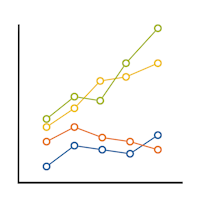Some repeated measures designs make it quite challenging to specify within-subjects factors. Especially difficult is when the design contains two “levels” of repeat, but your interest is in testing just one.
Let’s look at a great example of what this looks like and how to deal with it in this question from a reader :
The Design:
I want to do a GLM (repeated measures ANOVA) with the valence of some actions of my test-subjects (valence = desirability of actions) as a within-subject factor. My subjects have to rate a number of actions/behaviours in a pre-set list of 20 actions from ‘very likely to do’ to ‘will never do this’ on a scale from 1 to 7, and some of these actions are desirable (e.g. help a blind man crossing the street) and therefore have a positive valence (in psychology) and some others are non-desirable (e.g. play loud music at night) and therefore have negative valence in psychology.
My question is how I can use valence as a within-subjects factor in GLM. Is there a way to tell SPSS some actions have positive valence and others have negative valence ? I assume assigning labels to the actions will not do it, as SPSS does not make analyses based on labels …
Please help. Thank you.
(more…)
Mixed models are hard.
They’re abstract, they’re a little weird, and there is not a common vocabulary or notation for them.
But they’re also extremely important to understand because many data sets require their use.
Repeated measures ANOVA has too many limitations. It just doesn’t cut it any more.
One of the most difficult parts of fitting mixed models is figuring out which random effects to include in a model. And that’s hard to do if you don’t really understand what a random effect is or how it differs from a fixed effect. (more…)
In this video I will answer another question from a recent webinar, Random Intercept and Random Slope Models.
We are answering questions here because we had over 500 people live on the webinar so we didn’t have time to get through all the questions.
(more…)
In this video I will answer a question from a recent webinar, Random Intercept and Random Slope Models.
We are answering questions here because we had over 500 people live on the webinar so we didn’t have time to get through all the questions.
(more…)
Question: Can you talk more about categorical and repeated Time? If I have 5 waves at ages 0, 1 year, 3 years, 5 years, and 9 years, would that be categorical or repeated? Does mixed account for different spacing in time?
Mixed models can account for different spacing in time and you’re right, it entirely depends on whether you treat Time as categorical or continuous.
First let me mention that not all designs can treat time as either categorical or continuous. The reason it could go either way in your example is because time is measured discretely, yet there are enough numerical values that you could fit a line to it. (more…)
 As mixed models are becoming more widespread, there is a lot of confusion about when to use these more flexible but complicated models and when to use the much simpler and easier-to-understand repeated measures ANOVA.
As mixed models are becoming more widespread, there is a lot of confusion about when to use these more flexible but complicated models and when to use the much simpler and easier-to-understand repeated measures ANOVA.
One thing that makes the decision harder is sometimes the results are exactly the same from the two models and sometimes the results are (more…)

